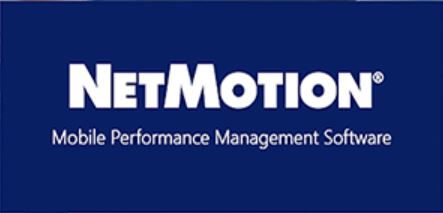NetMotion release designed to help admins manage access policies across networks, including public Wi-Fi
Public-safety and enterprise system administrators can gain insight about their personnel’s use of wireless networks—including mobile broadband systems that are not under their direct control—with the “Aware” release of solutions from NetMotion Software, according to a company official.
Steve Fallin, NetMotion’s senior product manager, said that the Aware release introduces new features to the company’s Mobility and Mobile IQ products to let administrators have better visibility and control over the applications that employees use, based on the security associated with the network accessed.
“What we’ve found in our own research and in talking with others is that there’s a huge need in the market to get the level of tools that most security admins have available for wired networks … to get that level of visibility for networks they don’t own, to get that level of control for networks they don’t own,” Fallin said during an interview with IWCE’s Urgent Communications. “It’s not like the carrier networks or the person operating the Starbuck Wi-Fi is going to turn around and give them that data.
“This release is all about responding to people moving on to Wi-Fi, more and more workers going mobile for the first time, and then giving the mobile-network admins the tools for audit and for control of what’s happening on those networks.”
Indeed, many enterprises have ample security and control mechanisms in place for wired or internal wireless networks, but those are not the only networks that their personnel access during a typical day, according to Fallin.
“We know, from our own research, that roughly 20% to 25% of public safety—during the course of their day—is going to be using public Wi-Fi. We sent out an anonymous survey, and they confessed,” Fallin said. “A lot of times, that works out very well. We heard from some people who say, ‘You know what? That’s part of our policing strategy, to get our officers working in places like Starbucks or McDonald’s … so they can be a personal presence, rather than a presence in a car in the community.’ It makes sense.
“The problem is that a lot of those Wi-Fi networks have zero security on them whatsoever. So, an officer is transferring from a secure environment in their car to an unsecure environment in the coffee shop. [With the Aware release,] We can detect that and, on the fly, change the security rules to protect the officer from themselves and to protect confidential information, to make sure things are going over an encrypted channel, that they have access to the resources that they need and not [use] resources that they don’t.”
Bolstered by the Aware release, NetMotion’s software suite also provides system administrators with usage information that can be help enterprises meet their cybersecurity goals and plan for future bandwidth needs, Fallin said.
On the backside, we can also prove where the applications they were using were being accessed, what versions of the applications they were using, what other services and systems they were accessing, and—more importantly—which ones they weren’t,” he said.
“So, if you are a person who has a concern about exfiltration of data to China, to Russia or even to Anaheim—pick a place that you’re concerned about—we can actually demonstrate whether you have an issue or if you don’t. We can put controls around what domains and what networks that people access and can shift those on the fly. It’s a huge step up in the level of visibility and control admins are getting over their mobile workers.”
NetMotion Software CEO Christopher Kenessey echoed this sentiment.
“NetMotion’s Aware release expands our policy and intelligence capabilities to dynamically and proactively give IT robust visibility over security and compliancy risks and the ability to enforce policies across any network,” Kenessey said in a prepared statement. “NetMotion is continuing our focus on delivering intelligent security solutions that give IT proactive ways to manage their mobile workforces. We’re bringing powerful new options to help businesses protect themselves and their employees beyond the corporate firewall.”

















